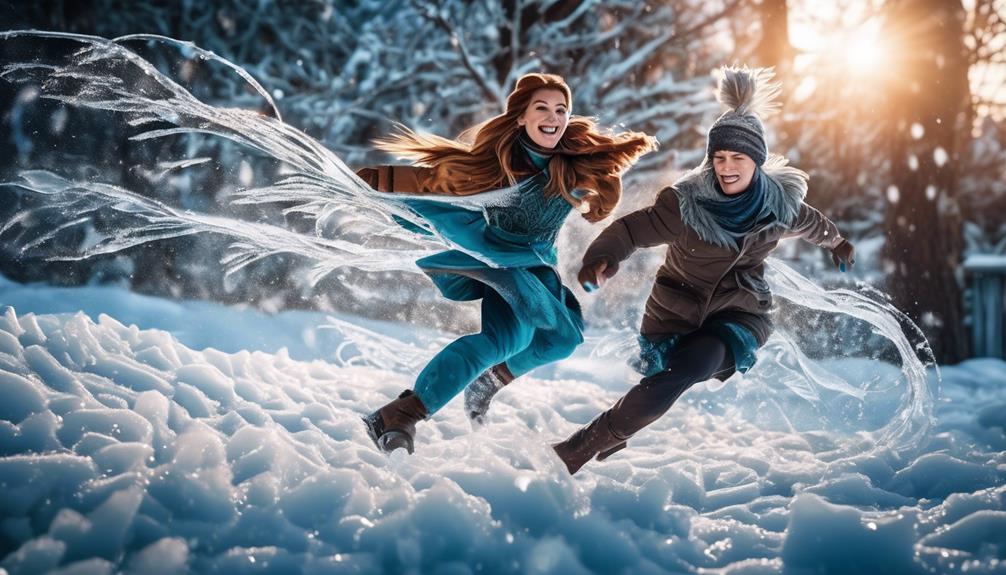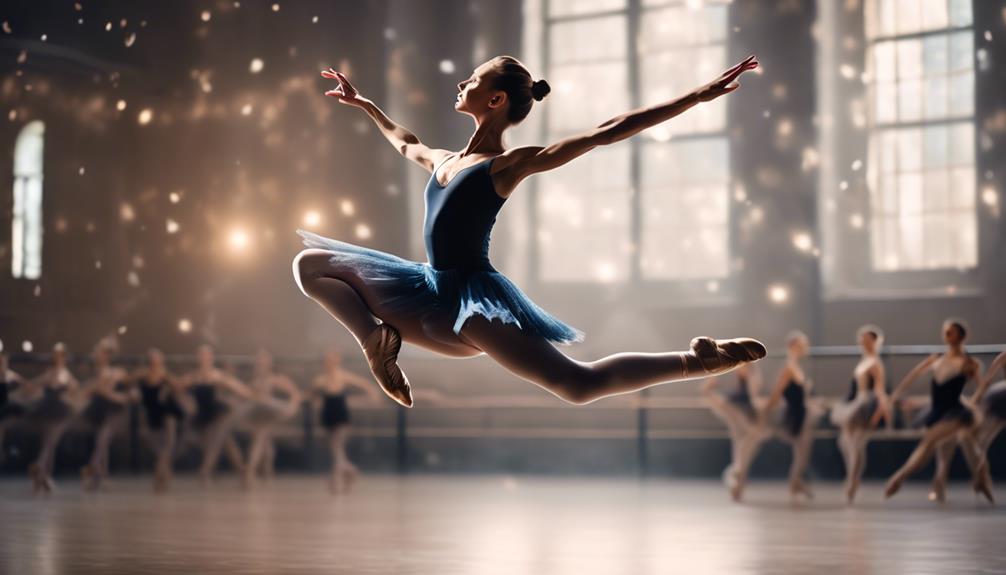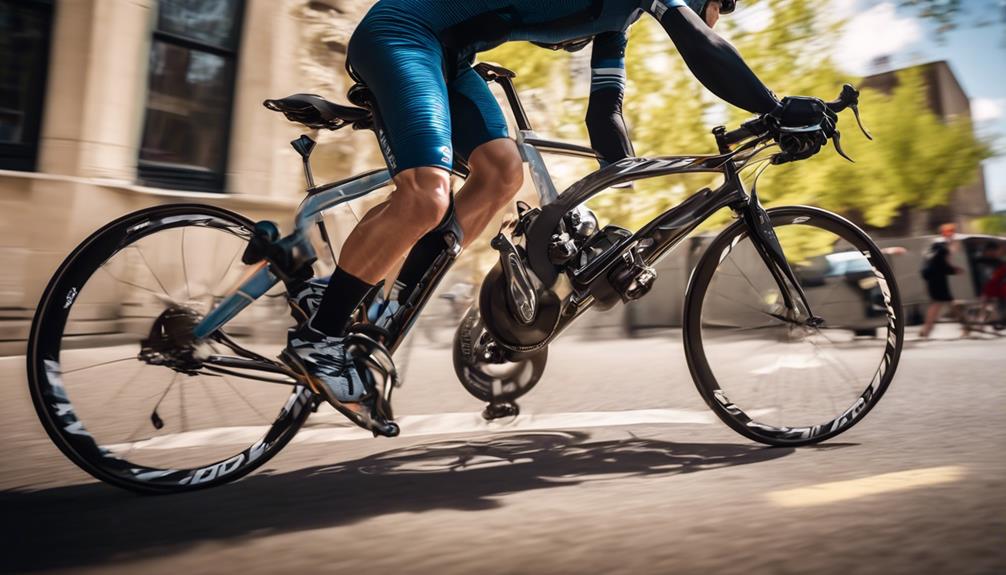Please note this post may contain affiliate links picked by me (Jay) that I have deemed may be of interest or relevant to you the reader of this.
These links do not affect the cost of the thing if you decide to purchase but i may get a little money if you choose to purchase.
For more information on my affiliate link policy click here.
Did you know that the shutter speed you choose can make or break your motion photos? It's true!
As a photographer, I've discovered that mastering the art of capturing motion requires understanding the different shutter speeds and how they affect the final result.
In this discussion, I'll reveal the three top shutter speeds that will help you achieve perfect motion photos.
So, if you're ready to take your photography skills to the next level and capture stunning moments in motion, then keep reading because you won't want to miss these game-changing tips.
Key Takeaways
- Fast shutter speeds are essential for freezing action and capturing fast-paced subjects.
- Slow shutter speeds can create motion blur and add a sense of movement and artistic flair to photos.
- Medium shutter speeds strike a balance between capturing motion and maintaining sharpness.
- Experimenting with different shutter speeds, using panning techniques, and utilizing image stabilization can help achieve perfect motion photos.
Fast Shutter Speeds for Freezing Action
When it comes to capturing fast-paced action shots, using fast shutter speeds is key. It's like having superpowers, freezing time and capturing moments that are gone in the blink of an eye. So, how can we use the magic of shutter speed to freeze action and create mind-blowing photos? Let's dive into the world of fast shutter speeds and discover the techniques for capturing fast moving subjects.
First off, let's talk about the basics. Shutter speed refers to the length of time your camera's shutter remains open. The faster the shutter speed, the shorter the time the shutter is open, resulting in that freeze-frame effect. To freeze fast moving subjects, you'll want to crank up the shutter speed. A good starting point is 1/1000th of a second.
But wait, there's more! Different types of motion require different shutter speeds. For sports photography, where athletes are sprinting or leaping, you'll need an even faster shutter speed, like 1/2000th of a second or higher. On the other hand, for capturing a moving car or bicycle, a slower shutter speed around 1/250th of a second can create a sense of motion blur, adding a dynamic feel to your photos.
Now, here's a little secret technique: panning. Panning involves tracking the subject with your camera while using a slower shutter speed. This technique allows you to capture a sharp subject against a blurred background, giving the illusion of speed and movement.
Slow Shutter Speeds for Creating Motion Blur
To create captivating photos with a sense of motion and artistic flair, one must explore the wonders of slow shutter speeds. It's like magic, really. By using slow shutter speeds, you can add a touch of elegance and dynamism to your photos, creating stunning images that truly come alive.
But how do you achieve the perfect amount of motion blur in your photos? Fear not, my fellow photography enthusiasts, for I'm here to share some creative techniques that will help you master the art of using slow shutter speeds.
First and foremost, it's important to understand that the amount of motion blur in your photos is directly influenced by the length of time your shutter remains open. The longer the shutter speed, the more motion blur you'll capture. So, if you want to convey a sense of movement in your photos, try using shutter speeds of around 1/30th of a second or slower. This will allow for a beautiful trailing effect, giving your images a dreamy and ethereal quality.
Experimenting with different subjects can yield fantastic results. For instance, photographing a moving car with a slow shutter speed can create streaks of light that add drama and excitement to the image. Similarly, capturing the graceful movements of flowing water with a long exposure can transform a simple waterfall into a mesmerizing masterpiece.
It's also important to consider the stability of your camera when using slow shutter speeds. To avoid unwanted camera shake, always use a tripod or stabilize your camera on a solid surface. This will ensure that only the moving elements in your photo are blurred, while the rest remains sharp and in focus.
Medium Shutter Speeds for Balancing Motion and Sharpness
Opt for a shutter speed that strikes the perfect balance between capturing motion and maintaining sharpness in your photos. When it comes to medium shutter speeds, there are a few techniques you can use to achieve this delicate balance. Here are some tips to help you capture the perfect moment with just the right amount of motion and sharpness:
- Experiment with different shutter speeds: To find the optimal shutter speed for capturing sports events or any fast-paced action, don't be afraid to experiment. Start with a speed of around 1/250th of a second and adjust accordingly. This will help freeze the action while still maintaining sharpness.
- Use panning techniques: Panning is a fantastic technique that allows you to capture a sense of motion while keeping the subject sharp. To achieve this, choose a slightly slower shutter speed, around 1/60th of a second, and follow the movement of your subject with your camera. This will blur the background, creating a dynamic effect.
- Consider image stabilization: If you're shooting handheld, image stabilization can be a game-changer. It helps reduce camera shake, allowing you to use slower shutter speeds without sacrificing sharpness. This feature can be found in many modern cameras and lenses, so take advantage of it to achieve that perfect balance.
- Embrace burst mode: Burst mode is a fantastic tool for capturing fast-moving subjects. By shooting in continuous mode, you can capture a series of images in rapid succession, increasing your chances of getting a perfectly sharp shot. This technique is especially useful when the action is unpredictable and you want to freeze the perfect moment.
With these techniques, you can find the sweet spot between motion and sharpness in your photos. So go out there, embrace innovation, and capture stunning images that tell a story.
Frequently Asked Questions
What Is the Ideal Shutter Speed for Capturing Fast-Moving Subjects Like Sports or Wildlife?
When it comes to capturing fast-moving subjects like sports or wildlife, the ideal shutter speed is crucial. It's all about finding the perfect balance between freezing the action and creating a sense of motion blur.
By experimenting with different shutter speeds, you can add a dynamic and energetic feel to your photos. So don't be afraid to play around and find what works best for you.
The possibilities are endless when it comes to capturing the perfect motion shot!
Can I Achieve Motion Blur in My Photos Without Using Slow Shutter Speeds?
Sure, you can totally achieve motion blur in your photos without using slow shutter speeds! There are some creative alternatives you can try.
For example, you can use panning techniques to capture a moving subject while keeping the background blurred.
Another option is to experiment with high shutter speeds and other camera settings to create intentional motion blur effects.
It's all about thinking outside the box and having fun with your photography!
Are There Any Specific Camera Settings or Techniques That Can Help Me Capture Motion Photos More Effectively?
When it comes to capturing motion photos, camera settings and photography techniques play a crucial role.
I remember a time when I was trying to photograph a bird in flight. By adjusting my camera's shutter speed and using burst mode, I was able to freeze the bird mid-flight, capturing its elegance and grace.
It was a moment of sheer exhilaration, and it taught me the power of mastering camera settings and techniques to capture the perfect motion shot.
How Can I Ensure That My Photos Have the Right Amount of Motion Blur Without Sacrificing Sharpness?
To ensure my photos have the right amount of motion blur without sacrificing sharpness, I've discovered some creative techniques.
One way is to experiment with intentional camera movement, which can give unique motion effects to still life photography. By carefully controlling the speed and direction of my camera movement, I can add a dynamic feel to my shots.
It's a fun and innovative way to capture motion while maintaining sharpness in my photos.
Are There Any Post-Processing Techniques That Can Enhance the Motion Effects in My Photos Captured With Medium Shutter Speeds?
Sure, there are plenty of post-processing techniques that can really amp up the motion effects in your photos captured with medium shutter speeds.
From adding motion blur to creating dynamic light trails, the possibilities are endless.
Experimenting with different filters, overlays, and adjustments can give your photos that extra oomph and make them truly stand out.
Conclusion
So there you have it, folks! The world of shutter speeds is full of possibilities to capture stunning motion photos. Whether you want to freeze action, create mesmerizing motion blur, or find the perfect balance between motion and sharpness, there's a shutter speed for every creative vision.
And here's a fun fact for you: did you know that the fastest recorded shutter speed ever achieved was a mind-boggling 1/400,000th of a second?
Now go out there and unleash your inner photographer! Keep shooting and let the motion come to life!


